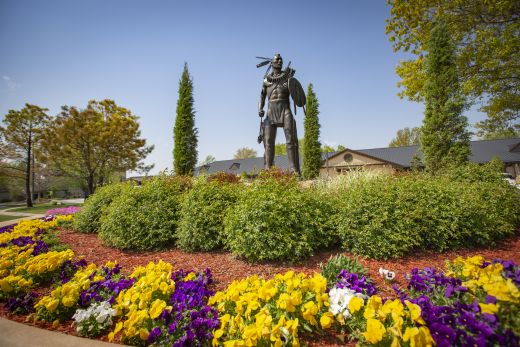Tribe early on made hiring Chickasaws a top priority

This article appeared in the February 2023 edition of the Chickasaw Times
ADA, Okla. – “Single-mindedness.”
Chickasaw Nation Director of Creative Development Jeannie Barbour uses the word to explain the immense success of two executive branch administrations at providing Chickasaw people with opportunities, education, programs, services and – most importantly – employment.
Providing jobs to Chickasaws and focusing on the tribe’s mission to “enhance the overall quality of life of the Chickasaw people” have not wavered in 59 years since Overton James was appointed Chickasaw Nation Governor in 1963 and Bill Anoatubby was elected Governor in 1987.
“I believe (our success) is the single-mindedness at attempting to provide what is best for the Chickasaw people,” Ms. Barbour said. “They both wanted Chickasaws to have adequate housing; both wanted adequate health care, education opportunities and jobs so First Americans could provide for themselves and their families.”
Governmental operations for the Chickasaw Nation consisted of four offices crammed in the Chickasaw Motor Inn. Purchased in 1972 and located in Sulphur, Okla., it was one of the first businesses operated by the Chickasaw Nation.
“By 1975, the tribe’s policy was to hire Chickasaws, and employment tripled. It was time to expand,” Ms. Barbour noted.
“The Chickasaw Nation applied for, and received, a federal grant for a new headquarters through the Office of Native American Programs (ONAP). It provided approximately 35 Chickasaws jobs. We also used the Comprehensive Employment and Training Act (CETA), and Chickasaw workers were used to construct the headquarters through that legislation as well.”
According to Ms. Barbour, the tribe acted as its own contractor for what was the original 8,000-square-foot structure. Several communities were vying to become the seat of the Chickasaw Nation. Ms. Barbour said proposals were entertained from Ada, Sulphur, Ardmore and Tishomingo.
The Chickasaw Nation realized Ada would serve as a more centralized hub for governmental operations. Two Ada officials, Ted Savage and James Thompson, representing the Chamber of Commerce and Industrial Trust Authority respectively, showed several property options to Governor James for the tribe’s headquarters. Ultimately, 7.5 acres were deeded to the tribe at the Arlington and Mississippi intersection.
Emil Farve, administrative assistant to Governor James, was placed in charge of headquarters construction. True to the tribe’s mission, Mr. Farve hired approximately 50 First Americans for construction of the building.
“It is my understanding that immediately after the ceremonial groundbreaking, the crew began building the foundation using shovels and pickaxes,” Ms. Barbour said. “The new building was completed on schedule in February 1977, and it was formally dedicated in March 1977 with an open house. Approximately 90 Chickasaw Nation employees occupied the new building.”
Contrasting where the Chickasaw Nation was in 1977 to today is profound.
With more than 76,000 citizens and nearly 14,000 employees, the Chickasaw Nation’s annual economic impact in the state of Oklahoma is $5.5 billion, supporting more than 34,400 jobs and $1.8 billion in wages and benefits.